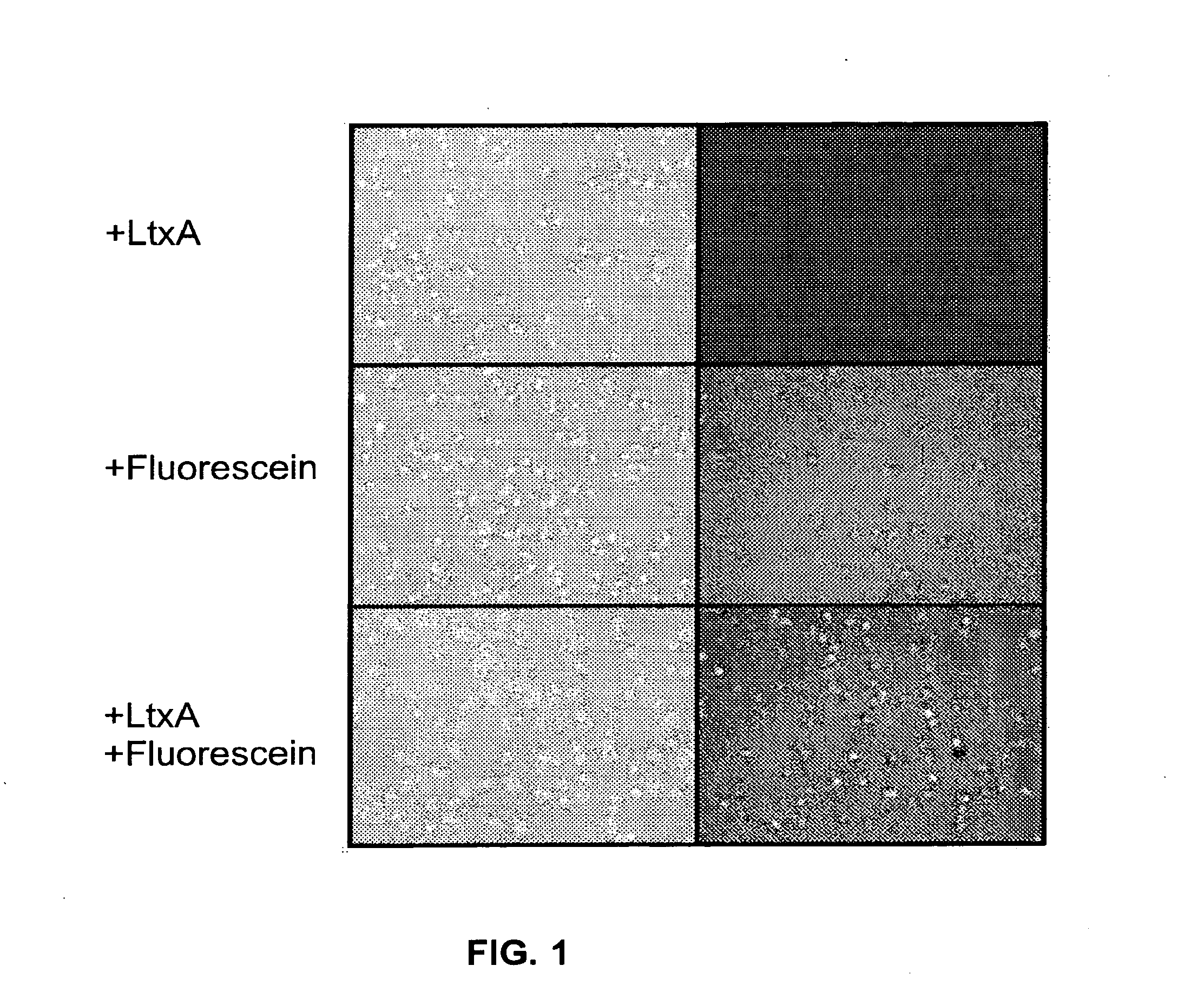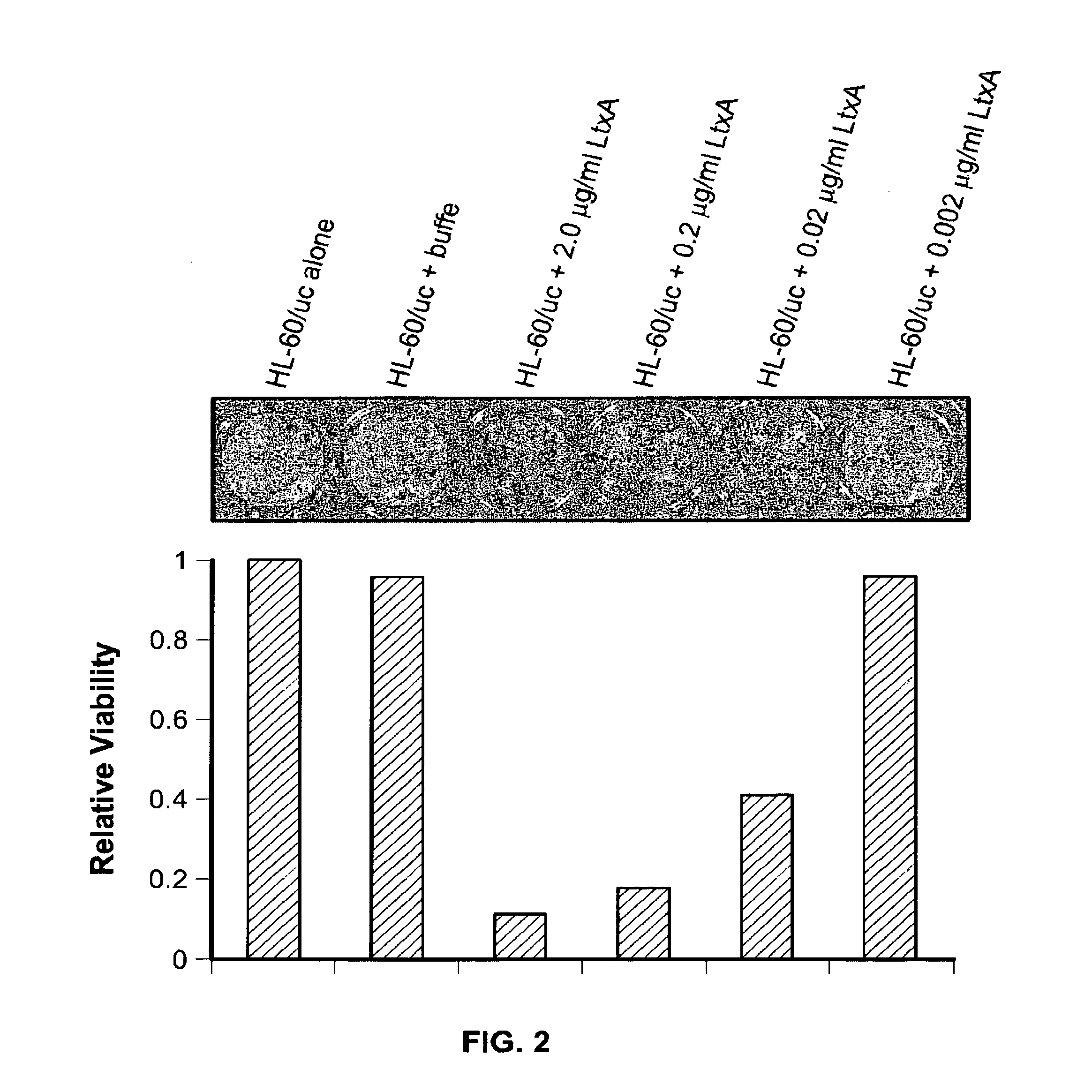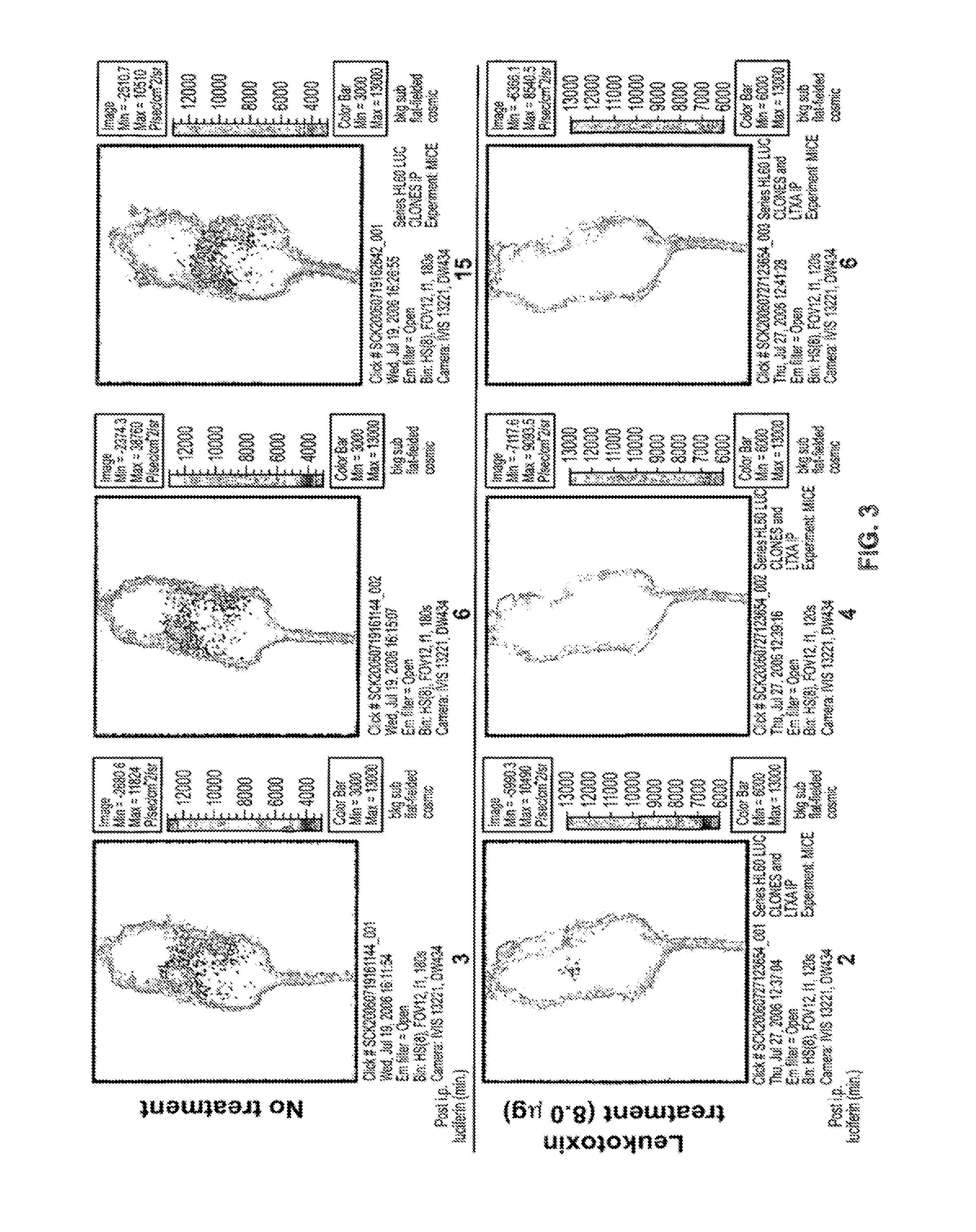Compositions for the treatment of cancer, and methods for testing and using the same
- Summary
- Abstract
- Description
- Claims
- Application Information
AI Technical Summary
Benefits of technology
Problems solved by technology
Method used
Image
Examples
example 1
Purification of LtxA from the NJ4500 Strain of A. actinomycetemcomitans
[0093]The JP2 strain of A. actinomycetemcomitans produces abundant LtxA, but it does not represent a fresh clinical isolate. Here, LtxA was purified from the clinical isolate NJ4500 of A. actinomycetemcomitans. This strain also produces and secretes a large amount of LtxA, but the cells adhere to surfaces instead of growing planktonically. This type of adherent growth results in a relatively low number of cells per volume. The cell density of adherent cells was increased by increasing the surface area on which the cells can grow through the addition of spherical glass beads. Soda lime beads provided the greatest amount of LtxA when compared to Pyrex glass beads. The amount of LtxA that was purified from NJ4500 in the presence of soda lime beads was approximately twice that of JP2.
[0094]It is important to note that growth of A. actinomycetemcomitans in the presence of both types of glass beads was similar suggest...
example 2
Imaging of Mice Injected with HL-60 luc
[0099]The images of the mice shown in FIG. 3 were collected using in vivo bioluminescence imaging. The SCID mouse model has been used extensively for the study of hematologic malignancies, and the pattern of leukemia displayed in SCID mice closely resembles human clinical disease. In the model, leukemia cells are injected into SCID mice, usually intravenously. A commonly used leukemia cell line is IL-60, originally isolated from a 36-year-old female patient with acute promyelocytic leukemia. Animal studies have shown that HL-60 cells can infiltrate bone marrow, the spleen, thymus, kidney, liver, lungs, and even the brain. It has been reported that the mean survival time for SCID mice that were injected with HL-60 cells was 42.5 days following injection; however, this time can vary depending on the passage state of the HL-60 cells being injected.
[0100]In vivo bioluminescence imaging (BLI) is a technology that allows visualization of live biolumi...
example 3
Experimental
Cells and Growth Conditions.
[0103]HL-60 cells were obtained from American Type Culture Collection (ATCC) and maintained in RPMI+10% fetal bovine serum (FBS) (Invitrogen, Carlsbad, Calif.) at 37° C.+5% CO2. Escherichia coli was grown in LB medium at 37° C. A. actinomycetemcomitans strains were grown in AAGM at 37° C.+10% CO2 as previously described (12).
DNA Manipulations.
[0104]The luciferase-encoding plasmid for transfecting HL-60 cells was constructed by cloning luciferase gene from pGL3 (Promega, Madison, Wis.) into the geneticin resistance gene-containing plasmid pCI-neo (Promega, Madison, Wis.). Both plasmids were digested with Bg1II and Xbal and the Neo-containing fragment was then ligated to the pGL3 fragment that contained the luciferase gene. The mixture was transformed into E. coli and the bacteria were selected on LB+carbenecillin (50 μg / ml). Plasmid from bacteria was prepared using the plasmid miniprep kit (Qiagen, Valencia, Calif.). ...
PUM
| Property | Measurement | Unit |
|---|---|---|
| Fraction | aaaaa | aaaaa |
| Cell death | aaaaa | aaaaa |
| Chemotherapeutic properties | aaaaa | aaaaa |
Abstract
Description
Claims
Application Information
 Login to View More
Login to View More - R&D
- Intellectual Property
- Life Sciences
- Materials
- Tech Scout
- Unparalleled Data Quality
- Higher Quality Content
- 60% Fewer Hallucinations
Browse by: Latest US Patents, China's latest patents, Technical Efficacy Thesaurus, Application Domain, Technology Topic, Popular Technical Reports.
© 2025 PatSnap. All rights reserved.Legal|Privacy policy|Modern Slavery Act Transparency Statement|Sitemap|About US| Contact US: help@patsnap.com



